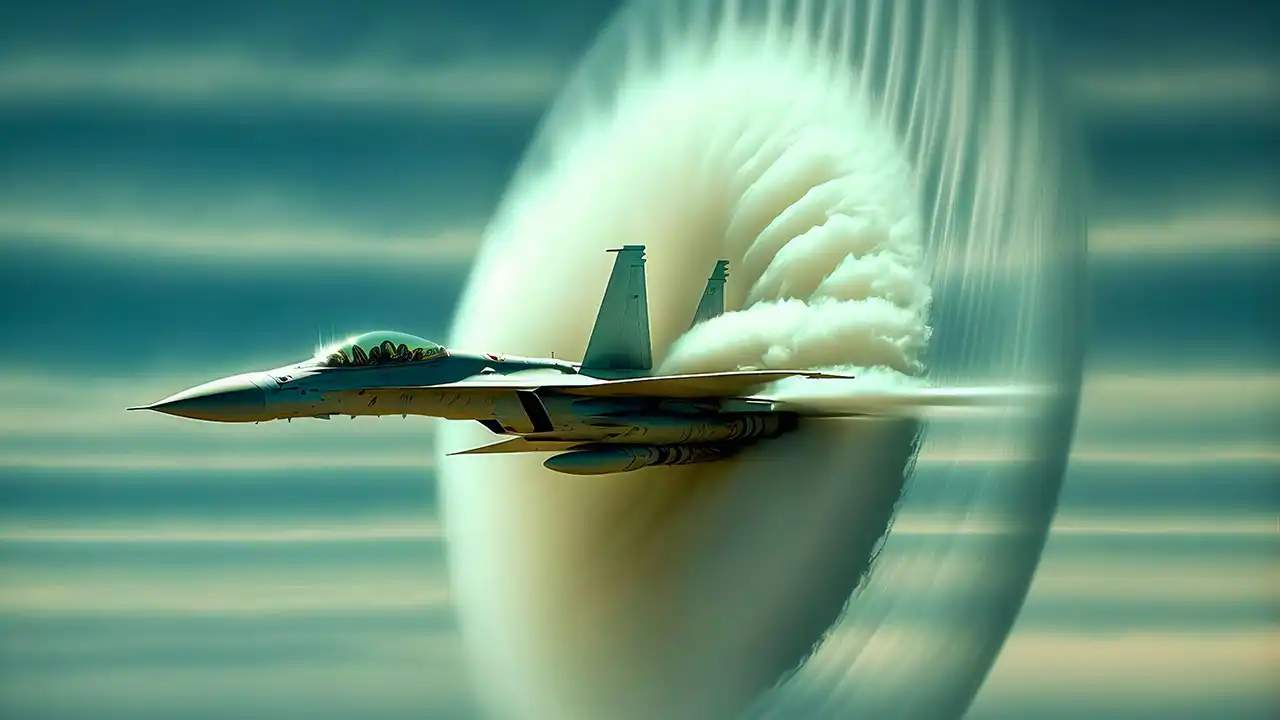Jet aircraft are amazing machines that can fly faster than the speed of sound, which is about 1,192 km/h (741 mph) at sea level and 20 °C (68 °F). When they do so, they sometimes create a strange halo around them, which looks like a white ring or cone. This phenomenon is called a vapor cone or a shock collar, and it is related to the sonic boom that the aircraft produces.
A sonic boom is a loud noise that occurs when an object travels through the air faster than the sound waves it creates. This causes the sound waves to pile up and form a shock wave, which is a sudden change in pressure and density. The shock wave travels in a cone shape behind the aircraft, with the aircraft at its tip. The angle of the cone depends on the speed of the aircraft, and the faster the aircraft, the narrower the cone.

The shock wave affects the air around the aircraft and lowers its pressure and temperature. This causes the moisture in the air to condense into tiny droplets, which form a visible cloud. The cloud appears as a halo around the aircraft, following the shape of the shock wave. The cloud disappears quickly, as the air returns to its normal pressure and temperature, and the droplets evaporate.

The vapor cone is not always visible, and it depends on the humidity and temperature of the air. The higher the humidity and the lower the temperature, the more likely the vapor cone will form. It also depends on the altitude and angle of the aircraft, and it is more likely to form when the aircraft is close to the ground and flying at a steep angle. The vapor cone is not harmful to the aircraft or the passengers, and it does not affect the performance or stability of the aircraft. It is just a visual effect that shows the power and speed of the jet aircraft.
When jet aircraft approach and exceed the speed of sound, they can create a visual phenomenon known as a “shock collar” or “shock halo.” This occurs due to the sudden change in air pressure and temperature around the aircraft as it transitions from subsonic to supersonic speeds.

Key Factors:
1. Shock Waves: As an aircraft approaches the speed of sound (approximately 343 meters per second or 1,125 feet per second at sea level), it compresses the air in front of it, forming shock waves. These shock waves are areas of rapid pressure change and can create a visible effect in the surrounding air.
2. Condensation: When the aircraft exceeds the speed of sound, the pressure drop in the air around it can cause moisture in the air to condense, forming a visible cloud. This cloud can appear as a halo or ring around the aircraft, often seen in the shape of a torus or collar.
3. Temperature Changes: The rapid changes in pressure and temperature can also lead to differences in air density, contributing to the visual effects seen during transonic and supersonic flight.
4. Visibility Conditions: The formation of the halo is more pronounced in certain atmospheric conditions, such as high humidity, which facilitates the condensation of water vapor.
Overall, the halo effect is a fascinating demonstration of the physics involved in high-speed flight and the behavior of air under varying pressures and temperatures.





